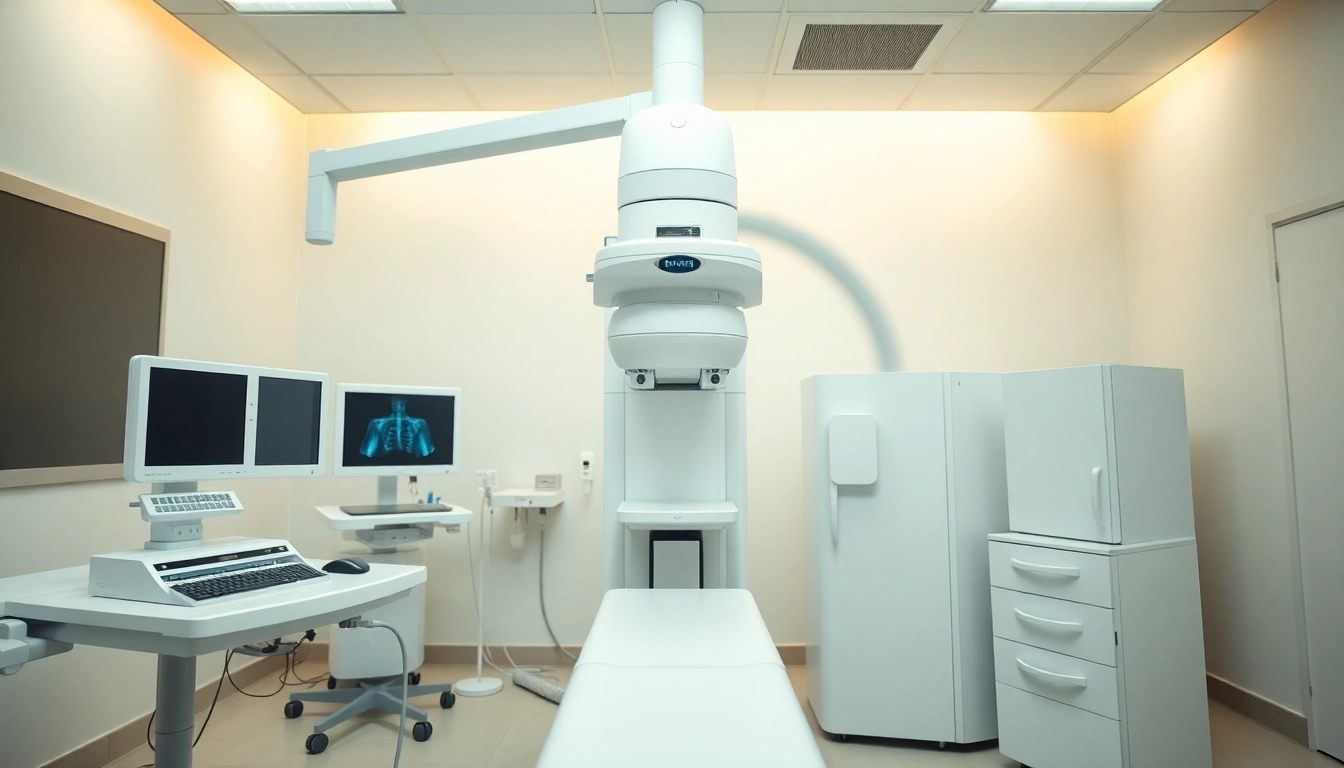Understanding Informatics in Healthcare
Definition and Scope of Healthcare Informatics
Healthcare informatics is an interdisciplinary field that integrates information technology, data analysis, and healthcare management to improve patient care and enhance healthcare operations. At its core, informatics focuses on how to collect, store, analyze, and utilize data to support decision-making in healthcare settings. This domain encompasses a variety of areas including clinical informatics, consumer health informatics, and public health informatics, all of which play crucial roles in optimizing the healthcare system.
The definition of informatics, as found in various literature, can broadly be seen as the science of processing data for healthcare. According to the www.informaticsview.com, the field seeks to improve health outcomes by leveraging data through technology and analyzing health information.
Importance of Informatics in Clinical Settings
The significance of informatics in clinical settings cannot be overstated. With the increase in patient volume and complexity of cases, healthcare professionals require reliable tools to manage patient data effectively. Healthcare informatics provides essential capabilities such as Electronic Health Records (EHRs), Clinical Decision Support Systems (CDSS), and Health Information Exchanges (HIEs) that streamline clinical workflows, enhance communication among providers, and ultimately lead to improved patient outcomes.
Moreover, informatics plays a vital role in standardizing practices across different healthcare providers. By implementing systems that promote best practices, health informatics leads to higher adherence to clinical guidelines and improved quality of care.
Key Technologies in Health Informatics
Numerous technologies are fundamental to the success of health informatics. One of the backbones is Electronic Health Records (EHRs), which digitalize patient data and make access easier for healthcare providers. Other key technologies include:
- Clinical Decision Support Systems (CDSS): Tools that provide healthcare professionals with knowledge-based assistance during clinical decision-making.
- Telemedicine: Remote patient care solutions that allow for real-time consultations and monitoring of patients using technology.
- Health Information Exchange (HIE): Systems that facilitate the sharing of healthcare information among organizations to improve coordination of care.
- Predictive Analytics: Techniques that leverage big data to forecast potential health risks and outcomes based on existing patient data.
Applications of www.informaticsview.com in Real-World Scenarios
Case Studies and Practical Implementations
The application of informatics in real-world scenarios showcases the transformative power of technology in healthcare. Case studies from various healthcare institutions demonstrate how informatics solutions have improved patient care and operational efficiency.
For example, a prominent academic medical center implemented an EHR system that integrated clinical data, imaging results, and lab findings into a single platform. This resulted in reduced medication errors by 30% and a decrease in hospital readmissions by 15% within the first six months of rollout. Such success stories underscore the real impact informatics can have on healthcare delivery.
Impact of Health Informatics on Patient Care
Health informatics significantly impacts patient care by enhancing the accuracy and speed of information sharing. Access to comprehensive and integrated patient data allows healthcare providers to make informed decisions promptly, which is crucial in emergency situations. In addition, patient engagement is improved through informatics tools, as patients are more empowered to take charge of their health through portals that allow them to view their health records, lab results, and appointment schedules.
Moreover, health informatics contributes to personalized medicine, where treatment plans can be tailored based on a patient’s unique genetic makeup and health history. This approach not only enhances treatment outcomes but also minimizes unnecessary tests and procedures.
Tools and Software in Healthcare Informatics
Numerous tools and software programs facilitate the implementation and use of health informatics. Some noteworthy examples include:
- Epic Systems: A widely used EHR system that organizes patient information and supports health data analysis across organizations.
- Cerner: Another major EHR platform that offers a suite of tools for managing patient data, which enhances clinical management and operational performance.
- IBM Watson Health: A cognitive computing platform that leverages AI to analyze health data and provides insights for better decision-making.
- Tableau: A data visualization tool that brings real-time analytics to health data, enhancing reporting capabilities and operational insights for healthcare executives.
Common Challenges in Health Informatics
Data Security and Patient Privacy Issues
While health informatics offers significant benefits, it also presents challenges, particularly regarding data security and patient privacy. As healthcare organizations increasingly rely on digital systems, the risk of data breaches grows. Confidential patient information can be compromised if adequate security measures are not in place. To mitigate these risks, healthcare providers must adopt robust cybersecurity protocols, including encryption, multi-factor authentication, and continuous security monitoring.
Additionally, compliance with regulations such as the Health Insurance Portability and Accountability Act (HIPAA) is paramount. Organizations must regularly train staff on privacy policies and procedures to ensure patient information is handled securely.
Integrating New Technologies into Existing Systems
The integration of new technologies into existing health informatics systems poses another challenge. Healthcare organizations often operate with legacy systems that may not be compatible with the latest technologies, leading to difficulties in data sharing and interoperability.
Organizations need to invest in thoughtful planning and assessment before implementing new technologies. A phased approach to integration, where new tools are piloted before full-scale implementation, can help address compatibility issues and facilitate smoother transitions.
Overcoming Resistance from Healthcare Professionals
Resistance to new informatics solutions among healthcare professionals can impede successful implementation. Change can be challenging, and there is often fear surrounding new technologies, particularly among staff who may feel their skills are being threatened or rendered obsolete.
To overcome this resistance, healthcare organizations should engage with staff from the outset, clearly communicating the benefits of new informatics tools. Providing comprehensive training and support can also foster acceptance and encourage a culture that embraces innovation. Acknowledging input from end-users in the development and implementation process can empower them and reduce apprehension about new systems.
Best Practices for Implementing Informatics Solutions
Developing a Comprehensive Informatics Strategy
Creating a comprehensive informatics strategy is crucial for successful implementation of informatics solutions. This involves evaluating the current state of data management, identifying gaps, and setting clear objectives aligned with organizational goals. A well-defined strategy should encompass all aspects of informatics, including technology needs, staff requirements, and implementation timelines.
Engaging stakeholders from various departments in the planning process ensures that the strategy addresses the unique needs of each area, fostering buy-in and collaboration across the organization.
Training and Educating Healthcare Staff
Training and education are vital components for the successful adoption of informatics in healthcare. Healthcare providers must receive proper training on how to use new technologies effectively and understand the importance of informed data usage. This can be achieved through comprehensive training programs that include hands-on sessions, online courses, and ongoing support.
Furthermore, healthcare organizations should encourage a culture of lifelong learning, where staff continuously enhance their skills and knowledge about informatics innovations and best practices.
Client-Centric Approaches to Informatics
Implementing client-centric approaches in health informatics entails leveraging patient data to enhance patient experiences and outcomes. Organizations should actively involve patients in their care through user-friendly portals that allow them to manage appointments, access medical records, and communicate with healthcare providers directly.
Moreover, healthcare professionals can utilize feedback from patients to continuously improve processes, ensuring that informatics solutions actively enhance patient engagement and satisfaction. Engaging patients as partners in care is essential to creating a responsive healthcare system.
Future Trends in Healthcare Informatics
Emerging Technologies and Innovations
The future of healthcare informatics is laden with promising trends and emerging technologies that have the potential to revolutionize healthcare delivery. For instance, blockchain technology is gaining traction as a secure method for sharing patient data among providers, improving transparency and trust in data management.
Moreover, advancements in mobile health (mHealth) applications are enabling patients to monitor their health remotely, thus increasing access to care and promoting proactive health management.
Predictive Analytics and Big Data in Healthcare
Predictive analytics represents a growing trend within healthcare informatics, harnessing the power of big data to make informed healthcare decisions. By analyzing vast datasets from numerous sources, healthcare organizations can predict patient outcomes, forecast patient needs, and identify trends that may not otherwise be evident.
This capability facilitates more timely interventions and resource allocation, ultimately leading to better patient care and more efficient healthcare operations.
The Role of Artificial Intelligence in Informatics
Artificial intelligence (AI) is emerging as a game-changer in health informatics. From AI-driven diagnostics to automated administrative processes, AI technologies streamline workflows and enhance clinical decision-making. For instance, natural language processing (NLP) systems can automatically process and analyze unstructured clinical notes, making pertinent information readily available to healthcare providers.
As AI continues to evolve, its applications will undoubtedly expand, enhancing the capabilities of health informatics and leading to more personalized, efficient, and effective healthcare.



